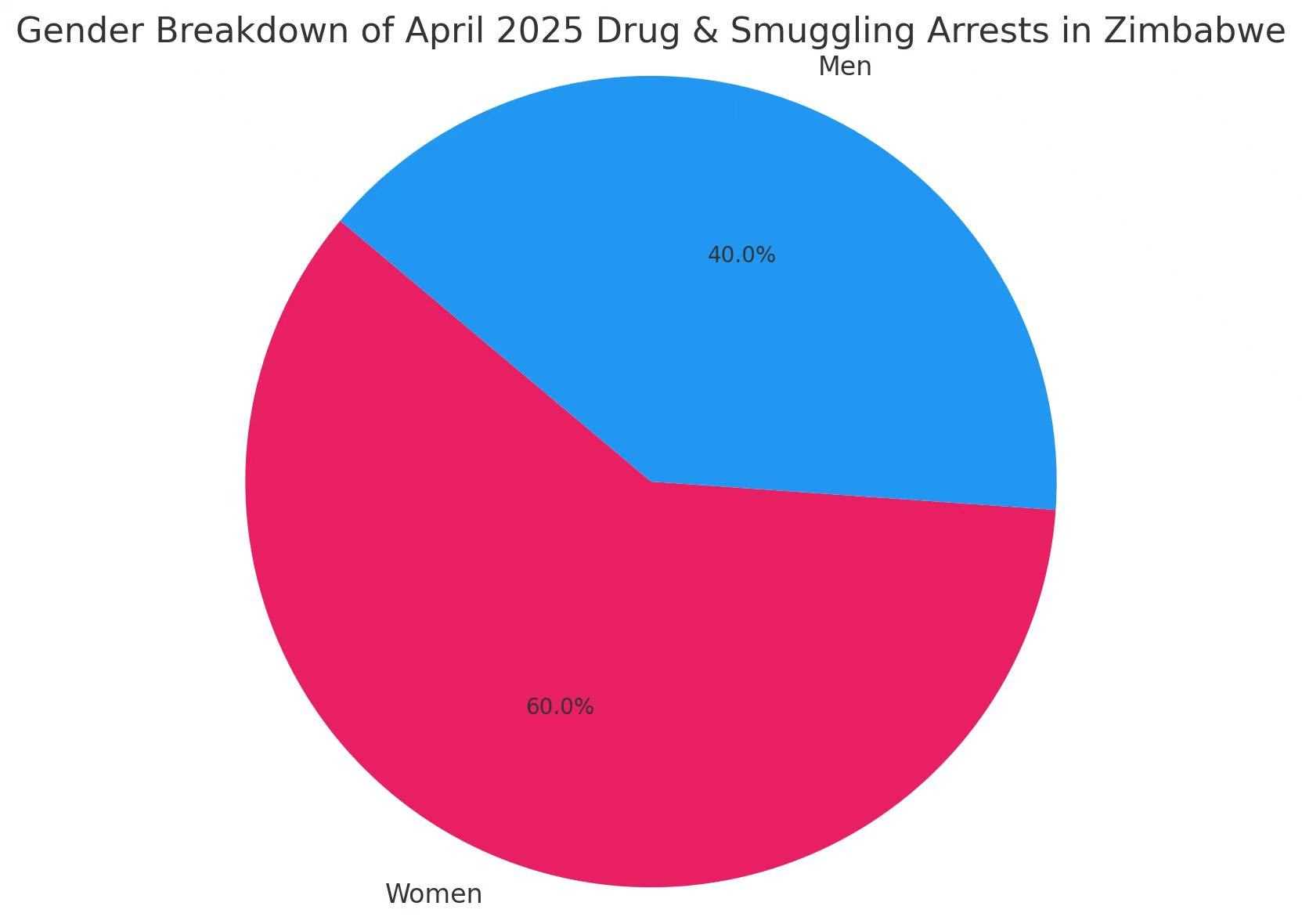
ZimNow Reporter
Zimbabwe’s police have intensified their clampdown on illegal drug possession and smuggling, with recent data revealing a noteworthy gender pattern: women accounted for the majority of arrests over drug-related incidents reported over a 7-day period.
According to Zimbabwe Republic Police updates, at least 10 individuals were arrested between 13 and 18 April 2025 in connection with various offenses, including unlawful possession of dagga (marijuana), unregistered medicines, smuggling of chicken cuts, and illegal importation of energy drinks.
Key Findings
• 60% of those arrested were women—a reversal of typical crime statistics that usually show male predominance.
• Beitbridge emerged as a hotbed of activity with major busts involving Broncleer cough syrup, a codeine-based substance often abused as a narcotic.
• Arrested women included Emmaculata Chikara (broncleer and chicken cuts), Lucia Nikarawa (smuggled energy drinks), and Fracia Mupfumbe and Getrude Bhinza (dagga).
Related Stories
• Arrested men included haulage truck operators and small-time distributors in Harare’s suburbs like Kambuzuma and Mbare.
Geographic Trends
• Border areas like Beitbridge and Makuti continue to be flashpoints for smuggling-related arrests.
• Urban centers like Harare and Marondera featured predominantly in drug possession cases, particularly of skunk and dagga.

Types of Substances Recovered
• Over 1,500 bottles of Broncleer syrup, a large-scale commercial consignment valued at USD 16,400, were seized from a single truck.
• Significant amounts of dagga (both skunk and traditional) were found in multiple locations.
• Smuggled consumables, such as chicken cuts and energy drinks, reflect a broader cross-border illicit trade.
ZRP Warning
Police have reiterated the call for community vigilance and warned against the dangers of drug abuse and smuggling, citing these activities as enablers of broader criminal networks.
Conclusion
While law enforcement has made notable gains, the arrests show that drug abuse and cross-border trafficking are evolving challenges that cut across gender lines, rural-urban divides, and socioeconomic classes. Authorities have promised increased surveillance and community engagement to address the root causes.


















Leave Comments